13 Minutes
At Startup Fair 2025 in Vilnius, the Core Stage turned from theory to lived reality. Under the title “Never Waste a Crisis: How Startups and Innovation Are Rebuilding Ukraine,” a cross-functional panel dug into what it actually takes to keep building companies during a full-scale war. Moderated by Andrius Milinavičius of BSV Ventures, the conversation featured Yana Hulak of the Ukrainian Startup Fund, Oksana Rybalchenko of UTU and the 3DUtool project, Ernestas Žvaigždinas of BROSWARM, and Artūras Žarnovskis, who manages the Co-create Future of Ukraine program. What followed was a grounded look at resilience, speed, and the very practical mechanics of partnering with Ukraine right now.
“Innovate today” — inside Ukraine’s startup pulse
Representing the Ukrainian Startup Fund, Yana Hulak opened with a thank-you to the region’s long-standing support, then went straight to the numbers and the mood on the ground. The Fund sits within the Ministry of Digital Transformation and has been operating for more than six years. In that time it has awarded non-equity, non-refundable grants to more than 470 startups, and it has expanded its role since the invasion to keep the broader ecosystem moving.
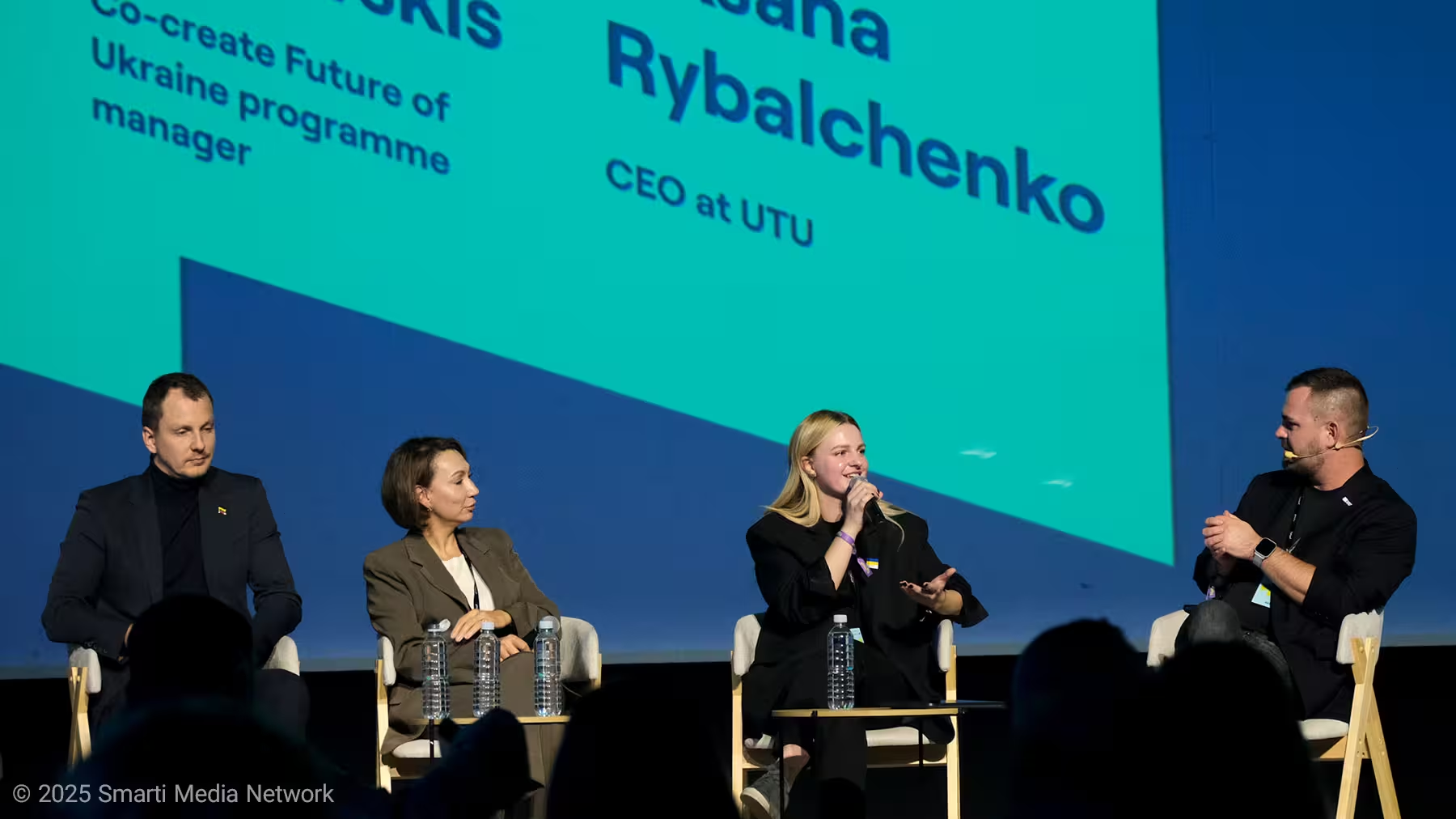
The headline metric is stark. By 2024, Ukraine counted roughly 2,600 active startups, which is about three times the 2020 figure. Nearly 18 percent of those companies were founded after the full-scale invasion began. Founders reorganized, teams relocated or split across cities, and yet the bias was to ship, to sell and to survive. Hulak summed up the culture that formed under pressure in three words: adaptability, unity, and speed. Every day matters. Founders are not waiting for tomorrow. They are innovating today.
Defense and dual-use, but not only
At the institutional level the focus necessarily shifted toward dual-use and defense tech. The Fund began financing those categories and later hosted the launch of Brave1, a military innovation cluster operating in the same orbit. Yet the strategy is deliberately broader. Just last week, Hulak noted, a new grant program with French partners under EU for Innovation East opened for civilian startups across three lanes: deep technology, green technology, and educational technology.
Hulak also referenced the government’s Win-Win Strategy to 2030, which identifies priority sectors where Ukrainian innovation can have outsized impact. Among those: education technologies, medical technologies, biotechnology, artificial intelligence, energy, and construction. One emblematic example is Esper Bionics whose invention was named among Time’s best of 2022. Another is the CityBrainer consortium, a joint effort between Ukrainian and international partners backed by the European Innovation Council. Through CityBrainer, 11 million euros have already gone to Ukrainian deep tech startups, with Lithuania’s Sunrise Tech Park among the partners.
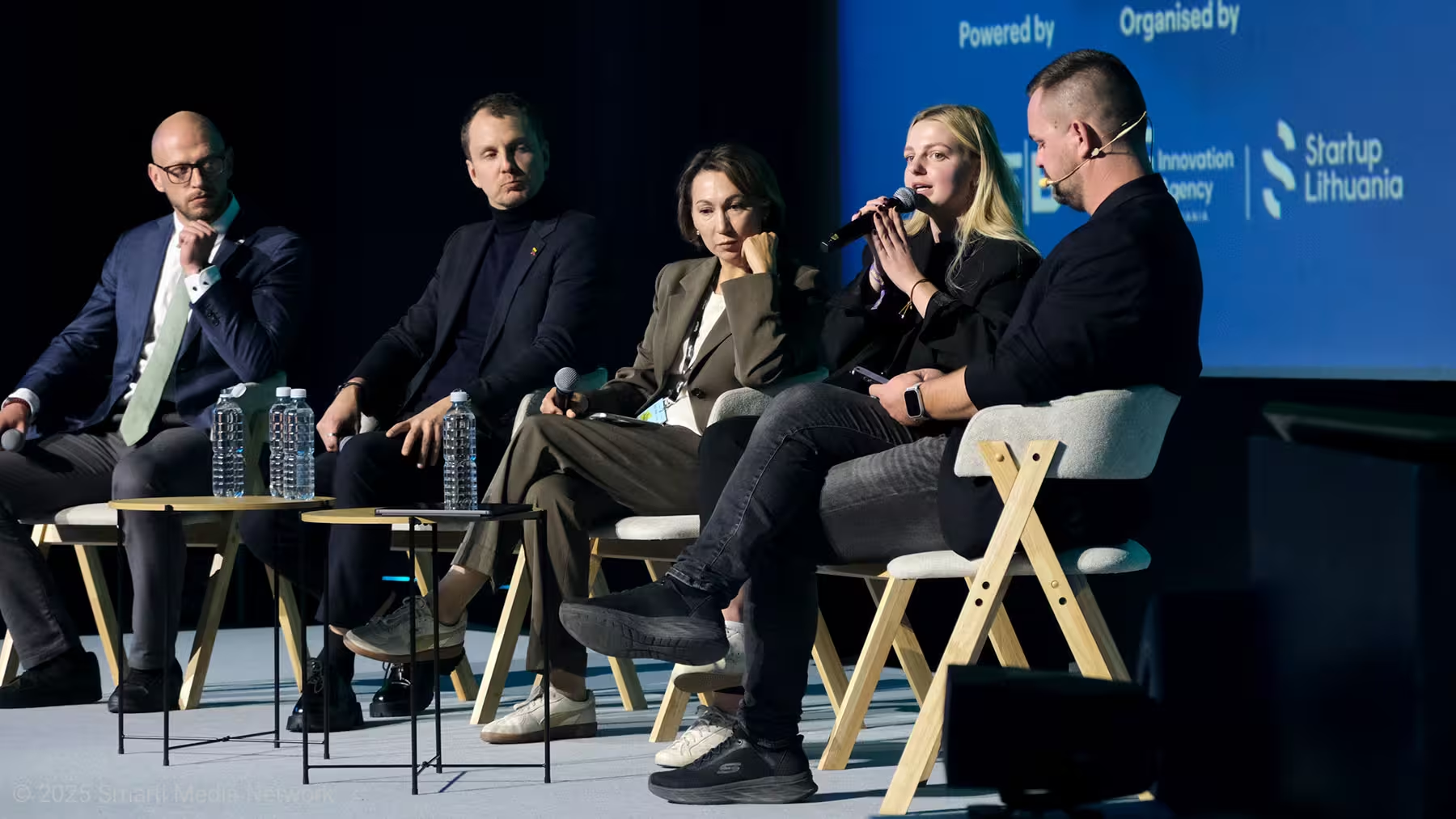
Hulak’s core message was both pragmatic and invitational. Ukraine is not only a nation to support. It is a nation to partner with. The Fund is prepared to be a bridge for international investors and operators who want to work with Ukrainian founders, co-design programs, and co-finance projects.
Concrete before comfort — printing houses and rebuilding lives
If the Fund’s brief is to keep oxygen flowing into the ecosystem, Oksana Rybalchenko is focused on pouring concrete for a future people can touch. As CEO at UTU and co-leader of the 3DUtool initiative in construction tech, she described a three-year sprint that began after the full-scale war started. The team designed a robotic 3D construction printer, built the control brain, and wrote slicer software that converts architectural drawings into ready-to-build instructions.
The team did not stop at prototypes. They printed a 140-square-meter house in Irpin for the family of a fallen soldier. The print time, Rybalchenko emphasized, was 58 motor hours. Technology is ready, the need is overwhelming, and the intent is future-facing. Even the company’s name carries that intent. UTU is the middle of “future,” a reminder that the goal is to create the future we want to live in.
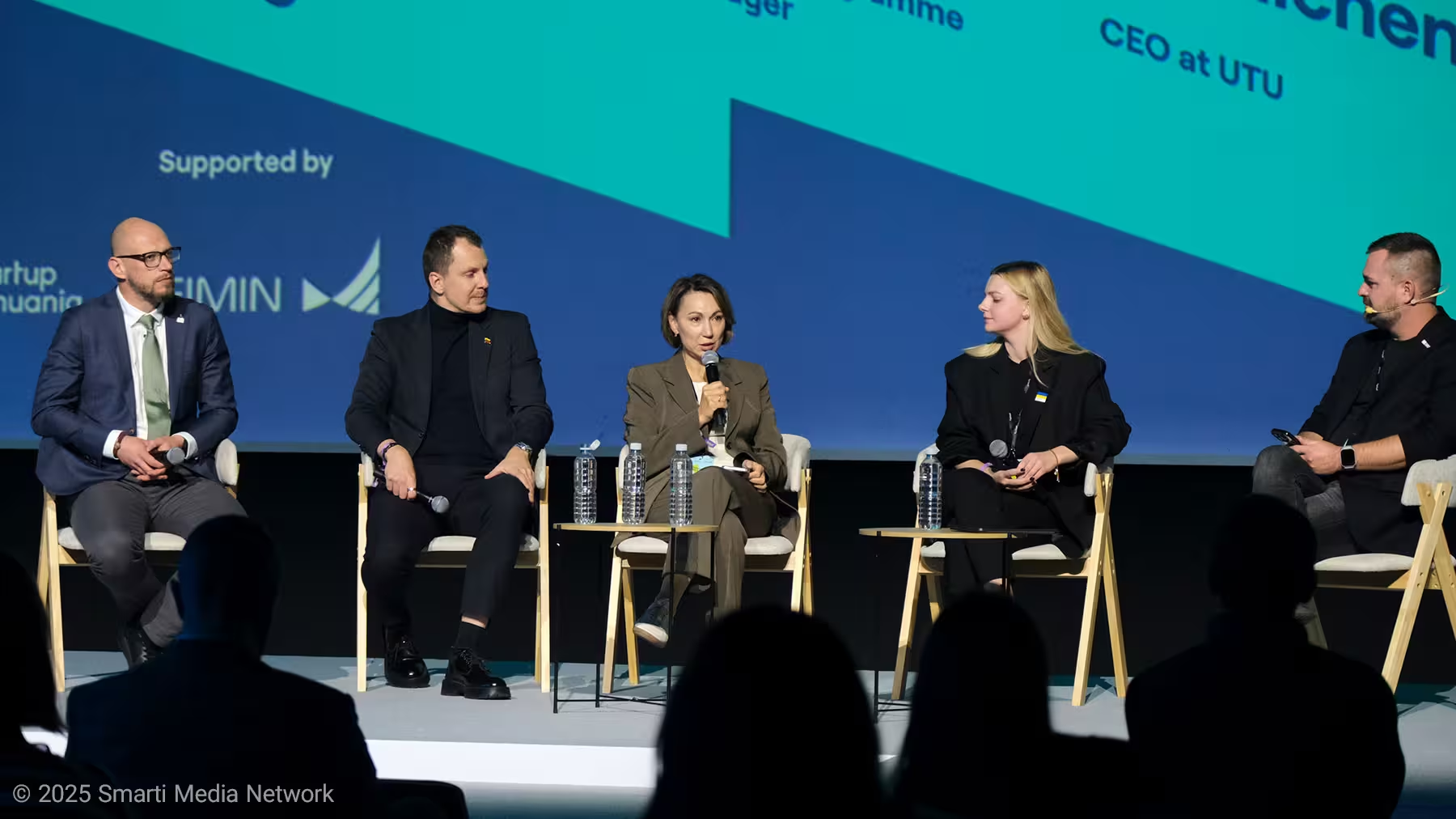
Rybalchenko then made a practical ask. The project is seeking:
Partners for a large R and D effort to advance complex 3D construction technology.
Collaboration with startups working on recycled materials, with the aim of substituting sand in mixes with circular inputs.
Energy independence solutions that integrate with printed homes, including solar and battery systems.
Donors and grants. The team has already received support from Seeds of Bravery and is applying to Horizon Europe. More public and philanthropic capital would accelerate deployment.
The subtext of her story is the ethos many Ukrainian founders voiced on stage. Do not build for the war. Build for the future.
Clearing the land and cutting through illusions
From construction to clearance. Ernestas Žvaigždinas founded BROSWARM with a moral imperative in mind: help Ukraine detect and remove landmines with next-generation sensing technology. He described how a handful of Lithuanian software “geeks” with no defense background jumped into perhaps the hardest category there is. The sales cycles are long, the stakes are life-and-death, and the learning curve is steep. They made the leap anyway.
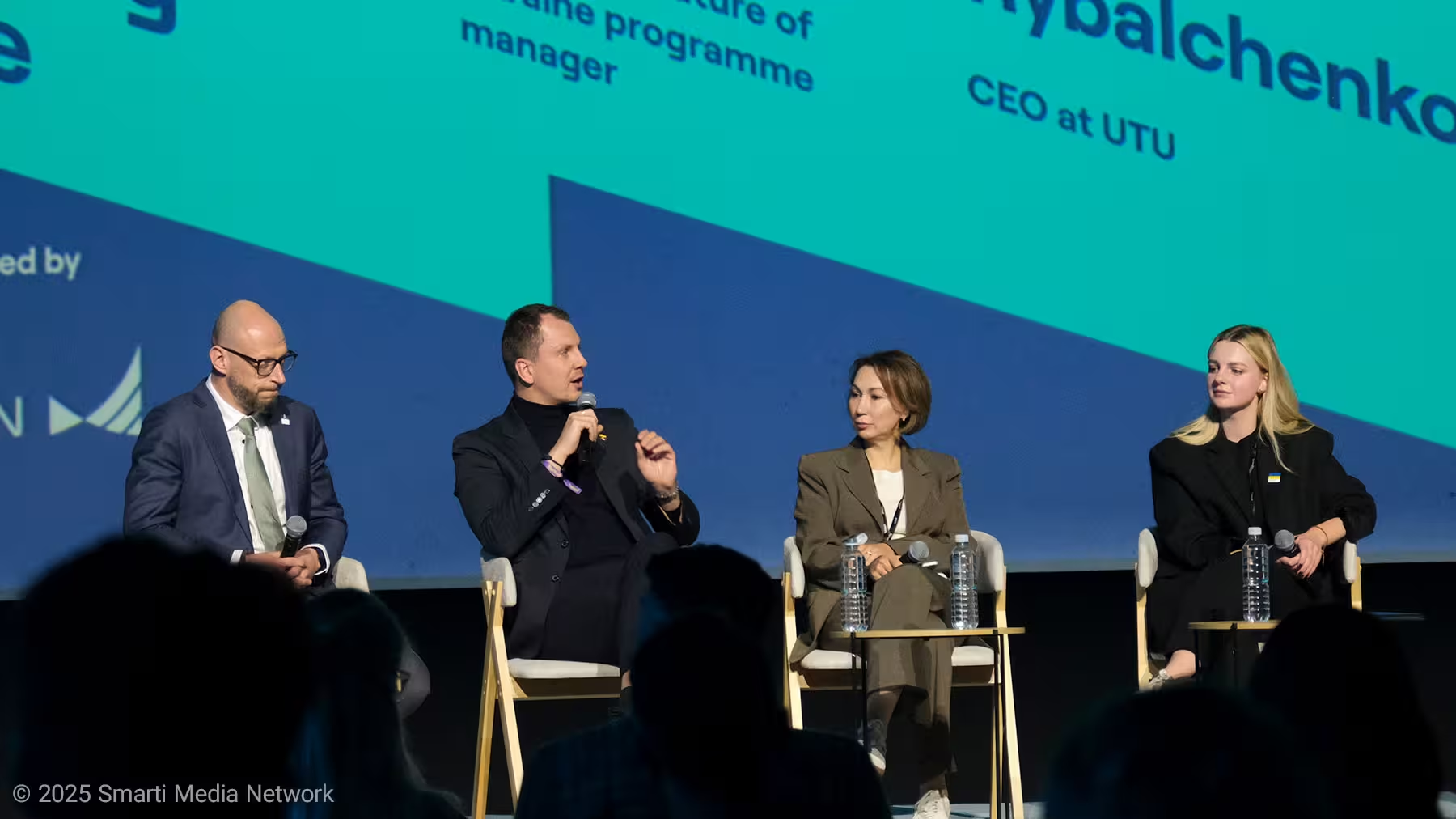
Žvaigždinas warned foreign innovators against a common mistake. Western teams often overestimate how much they understand about Ukraine’s needs and operating conditions. Without deep immersion, even well-intentioned products miss the mark. The fix is not a white paper. It is proximity to end users, granular feedback, and humility.
Then he flipped to the opportunity side. In specific areas, Ukrainian partners are operating with near zero bureaucracy, and the tempo is astronomical. If you have a solution that works, teams will test it today. An MVP that “just works” can get into the field far faster than many foreign builders expect. Speed, again, was the keyword.
Where to start and how to avoid rookie mistakes
Running the Co-create Future of Ukraine program, Artūras Žarnovskis spends his days at the intersection of public needs, international funders, and solution builders. He mapped the overlooked challenges that sit beside the war effort and that require creativity, not copy-paste answers.
Education. Access, continuity, and catch-up for a disrupted generation are a multi-year challenge. EdTech is not a nice-to-have. It is essential.
De-mining. Humanitarian de-mining will span decades. This opens lanes for sensing, robotics, data fusion, insurance, and training technologies.
Rehabilitation. The system must absorb large numbers of amputees and soldiers living with complex trauma. Health tech and biotech will be decisive.
Energy. Resilience and distributed generation are priorities from the grid to the household.
Public sector transformation. Ukraine’s digital state is already world-class in several pillars and is still evolving.
Two practical points stood out.
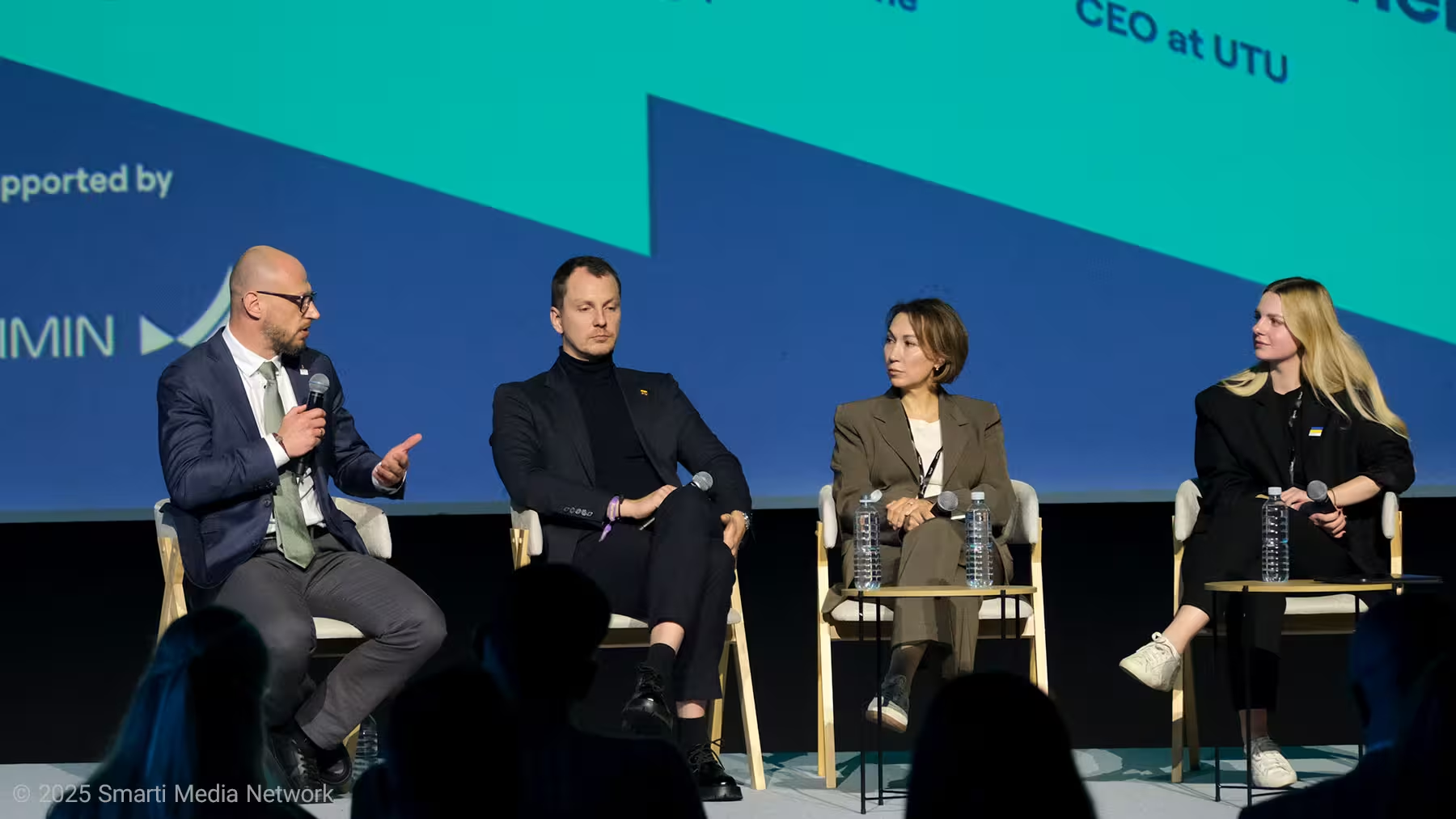
First, follow the money flows that de-risk execution. Many contracts in Ukraine are financed by international institutions such as the World Bank, Expertise France, GIZ and others. The end users are Ukrainian, needs are set with Ukrainian input, but financing often comes from abroad. This structure can give foreign startups the confidence to engage while ensuring solutions match local priorities.
Second, respect the tempo and competition. Kyiv hosts top-tier diplomats and heavy-hitting international organizations that have long experience operating in crises across Africa and the Middle East. The playing field is crowded and professional. You will be competing for attention and trust. Work as partners, not as lecturers. And be reachable on WhatsApp or Signal, not just email. Weekend meetings at 8:00 in the morning are normal. Email alone is too slow.
Žarnovskis also acknowledged the reality of imbalances. Some government services are world-class. Others still show gaps. On one end you have secure e-signatures and digital workflows. On the other you may still receive a ministry email from a free mail domain. The trend points in the right direction.
Bureaucracy, but make it digital
Hulak underlined that point with concrete examples. Ukraine’s digital government platform allows citizens to store IDs, licenses and documents, and to start a company from a phone in minutes. You can sell a car online, register marriage online, and execute many functions around civil life without standing in line. For founders, that means a faster path to incorporation and operations.
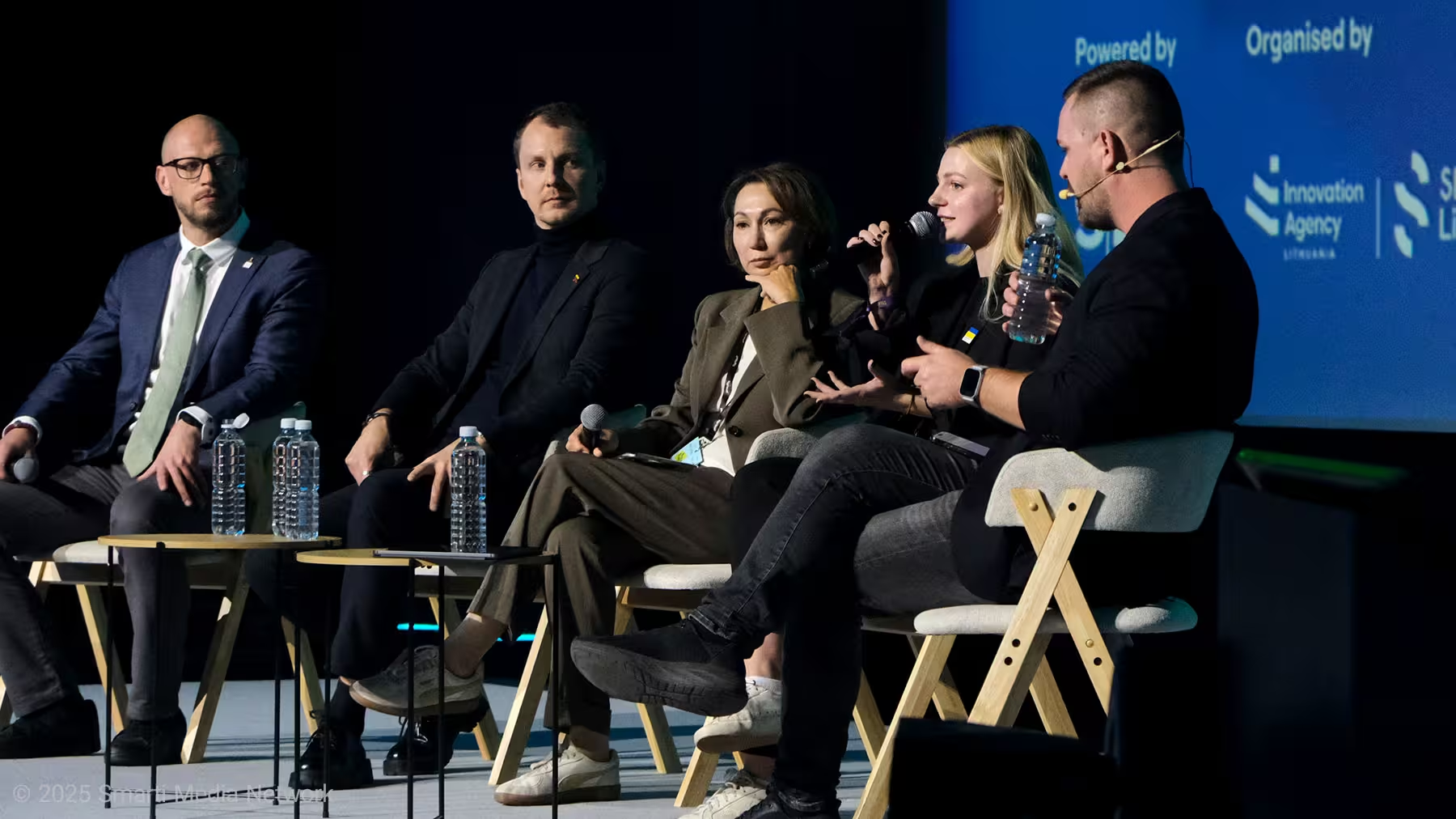
For international teams seeking a starting point, she shared two resources to track programs and opportunities:
Digital State UA — a central hub for news, projects, and programs relevant to startups operating in or with Ukraine.
GO-CO TA — a platform developed by the Ministry to connect international companies with Ukrainian tech talent and startups, and to set up collaborations.
Her invitation was simple. Reach out. The Fund and the Ministry are available to advise both Ukrainian and foreign startups on practical steps, from guidance to introductions.
What foreign teams get wrong
The moderator pressed the panel on “rookie mistakes” to avoid. Several patterns emerged.
Assuming you already know. Do not parachute in with a solution and a sales deck. Start with listening sessions and pilots close to end users.
Going solo. Connect to an existing mission or ministry program. Work with consortia such as CityBrainer or with local parks and clusters. Coordination increases surface area for funding and trust.
Underestimating tempo. If your organization cannot respond on a weekend or accelerate a deployment, say so upfront. Otherwise you will be outpaced by teams who can.
Over-indexing on email. In operational contexts, messaging apps dominate. If it is important, call.
Pitching “for Ukraine” without product market fit. The bar is practicality. Ukrainian partners will test what works right now.
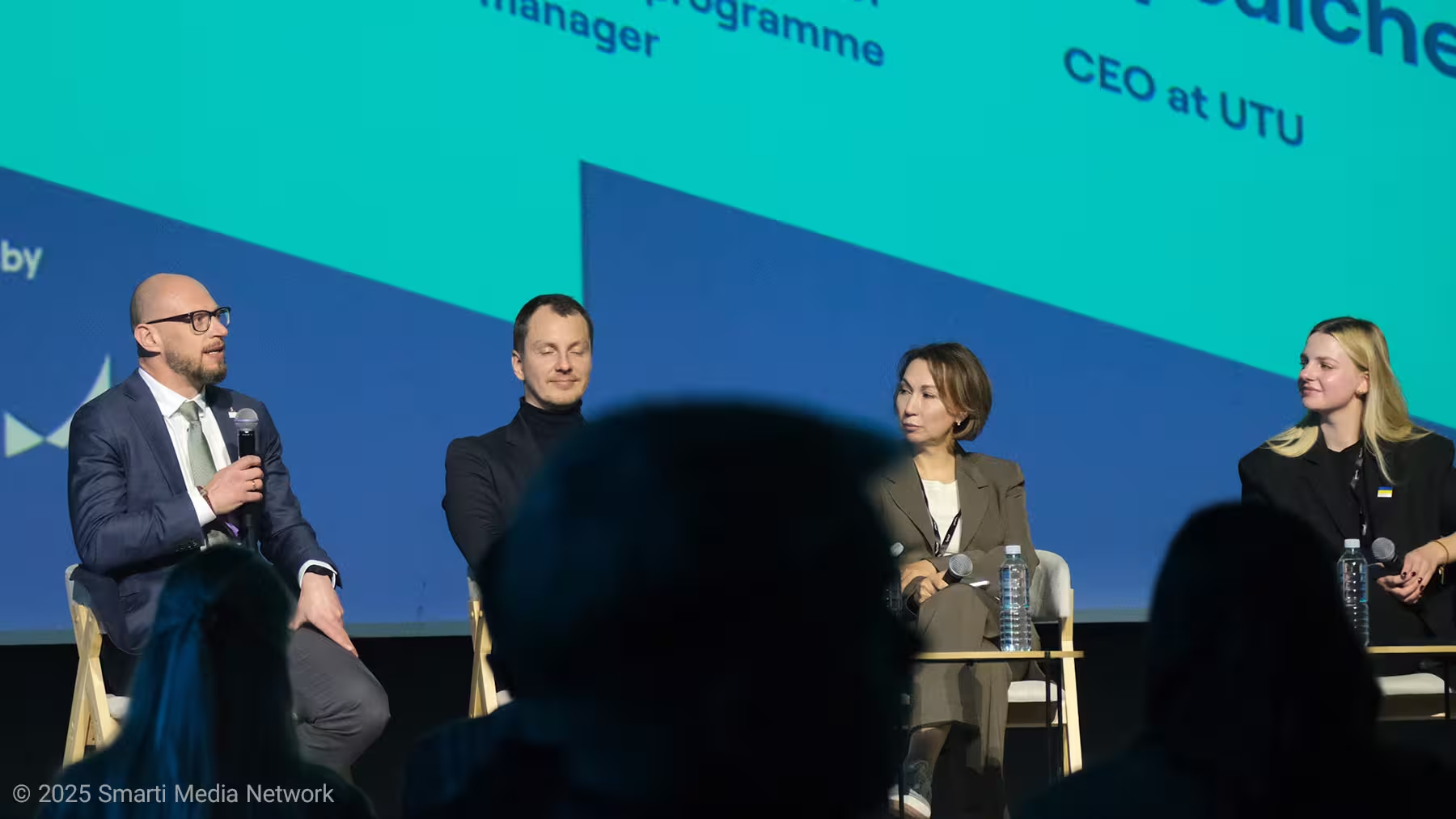
Žvaigždinas added one broader observation. In many European capitals, especially farther south, “help Ukraine” forums sometimes mask procurement roadshows for domestic suppliers. Ukraine does not need theater. It needs solutions that deliver. That is how trust is built.
The sectors that need you next
Asked where founders should focus, the panel repeatedly returned to five areas.
EdTech. From curriculum to delivery to diagnostics and analytics for catch-up, the spectrum is wide. Offline-friendly and low-bandwidth solutions have an edge.
Health tech and biotech. Prosthetics and orthotics, mental health and PTSD support, rehab robotics, supply chain for therapies, and new biomaterials.
De-mining technology. Sensing, autonomous vehicles, mapping and data fusion, training systems, and insurance or risk products attached to clearance.
Energy. Community-scale storage, microgrids, building-integrated solar and batteries, grid intelligence. Solutions that bundle finance with hardware will travel.
Construction and housing. Rapid build, 3D printing, recycled materials, quality control and certification, and energy independence at the unit level.
This is not an exhaustive list. It is a map of where demand is visible, budgets are forming, and pilot partners are leaning forward.
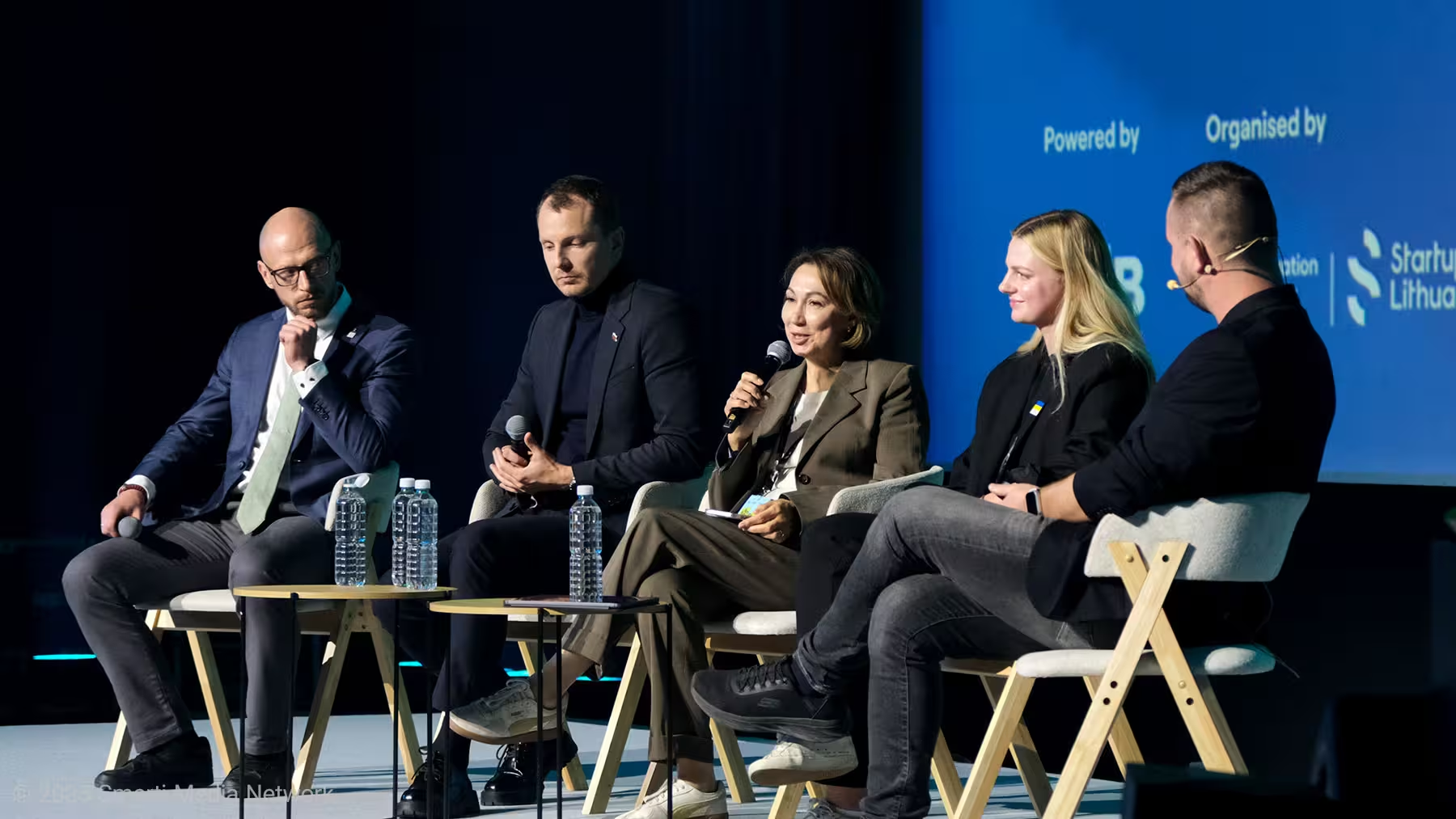
What Ukraine asks in return
The session closed with short, direct requests.
Partner, do not just donate. Hulak’s line bears repeating. Ukraine is a country to partner with. Bring your product, share the risk, and stay for the long run.
Bring an “enthusiastical” mindset. Rybalchenko’s phrasing drew smiles and nods. Optimism and stamina matter when you are printing houses under sirens.
Remember that AI is not the only hot topic. Žvaigždinas asked founders to give defense and humanitarian recovery the same creative energy they give generative AI. Funding is flowing. The moral case is clear.
Think beyond Ukraine. Žarnovskis pointed out that solutions proven in Ukraine can scale to Africa, the Middle East, and other post-conflict regions. Treat Ukraine as a proving ground and a gateway.
The moderator wrapped with a simple truth. Crises compress time. They also compress distance. The fastest way to help is still the oldest. Build bridges, one human to another, and then build the products that make those bridges permanent.
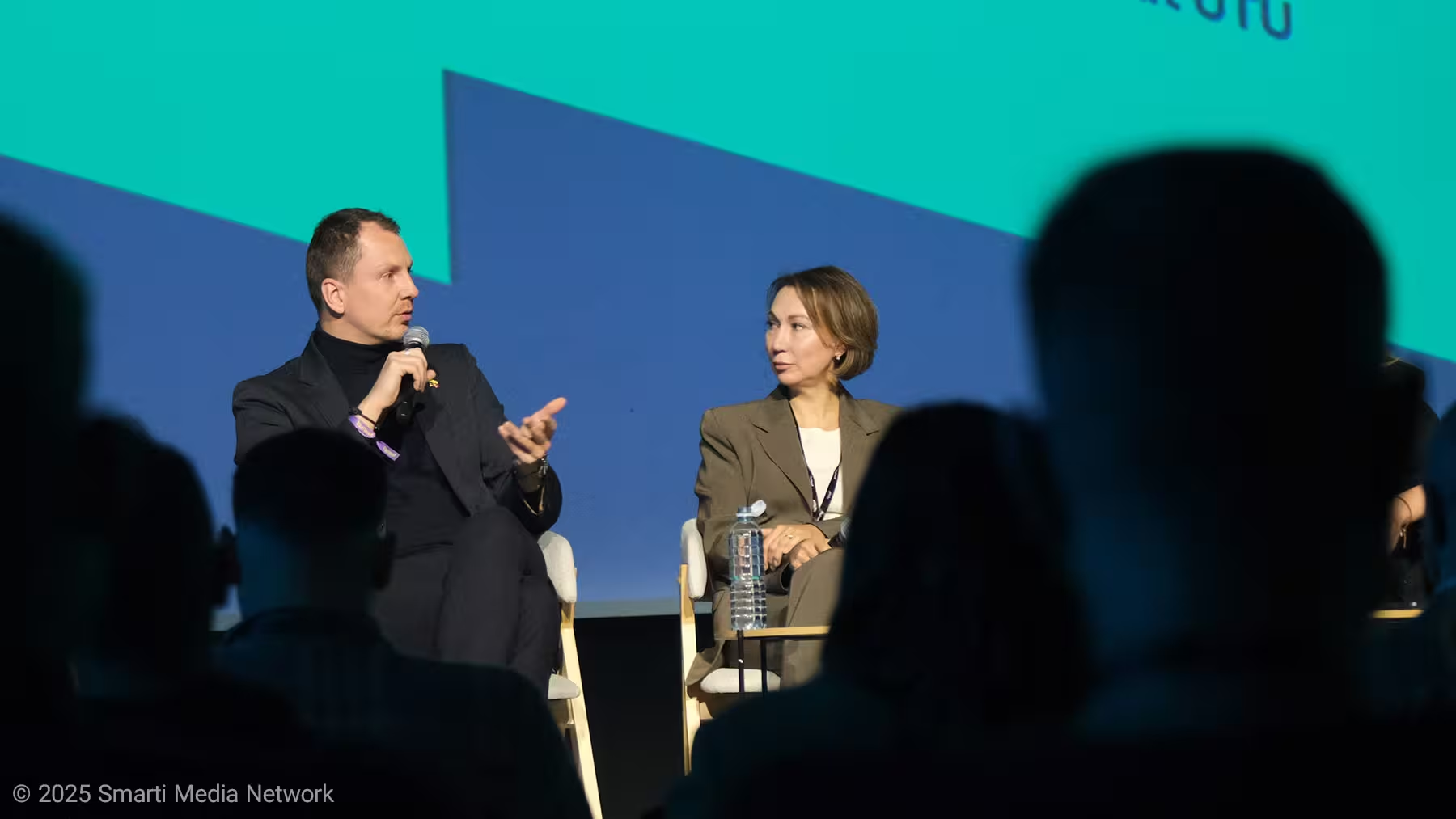
Field notes for operators and investors
If you are considering work in or with Ukraine in the next year, the panel’s advice condenses into a short checklist you can action immediately.
Start with a Ukrainian counterpart. Ministry cluster, regional tech park, university lab, or a fund like the Ukrainian Startup Fund.
Design for tempo. Staff a response channel on WhatsApp or Signal. Align your internal decision loops to 24/7 realities.
Pilot where the need is hot. Education catch-up, de-mining, rehab, energy resilience, and rapid construction are all priority lanes.
Use de-risked financing. Target calls and tenders financed by international institutions. Deliver to Ukrainian end users, invoice abroad.
Ship a working MVP. Per the BROSWARM story, “just works” beats “perfect later.”
Plan for scale beyond the war. Design products and business models that remain relevant in peacetime and transferable to other regions.
The opportunity is real. The competition is serious. The work is meaningful. And as several speakers said with quiet confidence, Ukraine’s founders are not waiting for tomorrow. They are building today.
Comments
Tomas
is this even true? 2,600 startups, 18% since invasion... sounds high. where's the source? whats the survival rate long-term, anyone got figures? kinda skeptical
mechbyte
wow didn’t expect that level of hustle - 3D printed homes under sirens, startups shipping daily. Respect, but how scalable? Also curious about regulation, funding timelines..

.webp)
Leave a Comment